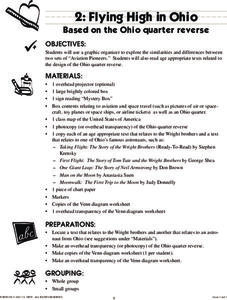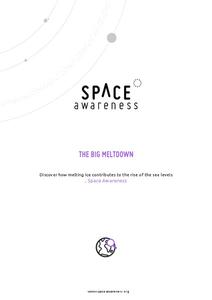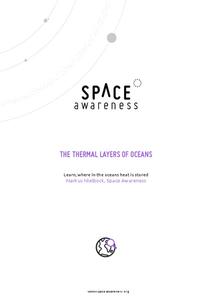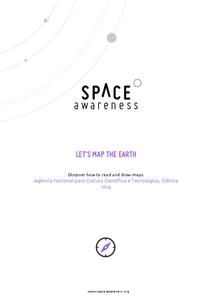Curated OER
Solids, Liquids, and Gases
Pupils explore the three main forms of matter: solid, liquid, and gas. They examine concrete examples of each, using their five senses and "experimenting" to find differences in them. They find pictures of each, cut them out and past...
Curated OER
Unsafe Waters
Students investigate deep sea explorations and the challenges that can occur. In this deep-sea exploration lesson students work in groups and create a deep sea exploration mural.
Curated OER
Intermediate Spelling- "Exploration"
For this spelling worksheet, students unscramble the letters to spell the words that match the definitions provided. The first and last letters of each word are correct; all words pertain to exploration.
Curated OER
Flying High in Ohio
Pupils use a Venn diagram to explore the similarities and differences between two sets of "Aviation Pioneers." They read age appropriate texts related to the design of the Ohio quarter reverse. They examine the quarter and locate Ohio on...
Curated OER
Stratigraphy and Cross-Dating
Students interpret archaeological strata using the law of superposition. They apply cross-dating to determine the age of other artifacts.
Curated OER
Garden For Life
Students are read a story about a girl their age helping others. They discover they can have a positive impact on others. They decide on a project related to literature that benefits the school or community.
Curated OER
Bounce to Spell
Students are in their own personal space with a playground ball and a partner. They are given a spelling word from their classroom or shoolwide list. They bounce the ball to their partner saying a letter as they pass the ball.
Curated OER
Joseph Holston Exhibition Lesson Plan
Young scholars, in groups, view original artworks by Joseph Holston in a gallery space. They create a genre work of art that emphasizes the use of the artistic elements line, color, and shape.
Curated OER
Look but Don't Touch:
Students complete a graphic organizer after identifying three interesting facts from a web site. They role play that the NASA space probe has landed on Mars where a large animal was found and they develop the important questions they...
Curated OER
Houses in Japan
First graders compare the everday lives of school-aged children in the United States and Japan by comparing the houses they live in. They discuss how traditional Japanese houses are designed with a feeling of opennes to the outdoors and...
Curated OER
Excavating the Past
Students discover how palaeontologists conduct a dig for fossils and how they interpret the age of the fossils. In small groups, they prepare a "dig site" consisting of bones, rocks and soil layered in a cardboard box. They switch boxes...
Curated OER
The Art of Making Do
Students learn how to understand and use fabrics in a scrap quilt. They will gain the most if they can actually compose a quilt (or the beginnings of one) within class time.Quilting is a skill that is difficult for younger children to...
Curated OER
Developing a Local Stratigraphy
Students examine rock strata for the distribution, deposition, and age of sedimentary rock. They describe rock types in a variety of outcrops and construct a regional stratigraphy.
Curated OER
Active Learning
Students practice using measurements and bar graphs to solve a running problem in this active Math lesson for various age levels. The lesson meets state standards in Mathematics and requires the use of "math journals" for final...
Space Awareness
The Sun Compass of the Vikings
Evidence shows the Vikings likely navigated by using a simple sundial to find their course. Videos, a short story, and discussion help bring this time period to life as they study European history with a hands-on experiment. Scholars...
Space Awareness
Star in a Box
What happens to stars as they get older? A simulation takes pupils through the life cycle of stars based on their masses. The resource introduces the Hertzsprung-Russell diagram and the common relationships and life cycle patterns observed.
Space Awareness
The Big Meltdown
Explore the world (our world) of melting ice caps. Why are these caps melting? What is the effect of melting ice caps? Dive into the ever-present issue of global warming with a resource that has learners looking at data and participating...
Space Awareness
The Thermal Layers of Oceans
How much does the sun heat up a lake or ocean? Scholars use a cup and a strong lamp to investigate the heat transfer and thermal layers in the ocean to come up with the answer. They collect data and graph it in order to better understand...
Space Awareness
Oceans on the Rise
Temperature rises and land disappears! Through a lab exploration, learners understand the effect of temperature increase on water similar to the effect of global warming on our oceans. As they heat the water in a flask, they measure the...
Space Awareness
Water is a Heat Sink
One of the key objectives of Europe's Copernicus Earth program is to monitor the temperatures of the oceans and seas on Earth. Young scholars learn the effects of different heat capacities through two experiments. These experiments...
Space Awareness
Greenhouse Effect
A greenhouse provides additional warmth and protection to the plants inside, but what if the greenhouse gets too hot? Pupils discuss and experiment with the difference between natural and anthropogenic greenhouse effect. They measure the...
Space Awareness
Sun, Earth and Moon Model
The moon orbits Earth while the Earth is rotating, and the Earth revolves around the sun. This can be a tricky concept for young astronomers. Implement an activity that helps distinguish between the movements of Earth's systems around...
Space Awareness
Know Your Planets
Does your class know their planets? Implement an activity that has them describing the solar system, identifying properties of the planets, and placing them in order from their distance from the sun.
Space Awareness
Let's Map the Earth
Before maps went mobile, people actually had to learn how to read maps. Pupils look at map elements in order to understand how to read them and locate specific locations. Finally, young cartographers discover how to make aerial maps.























